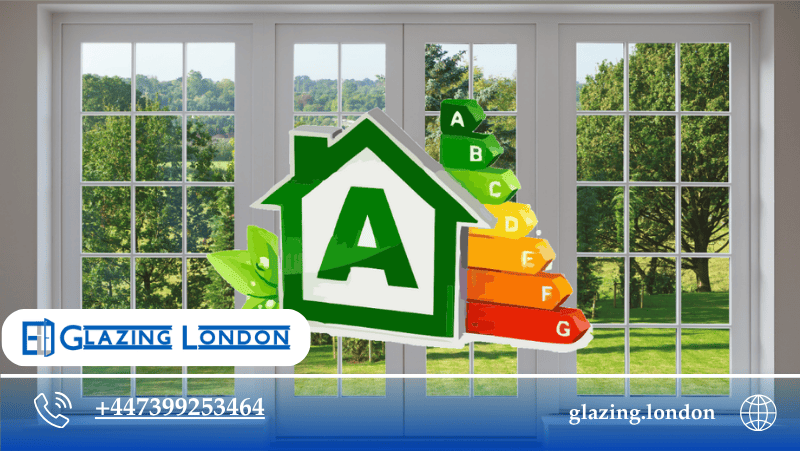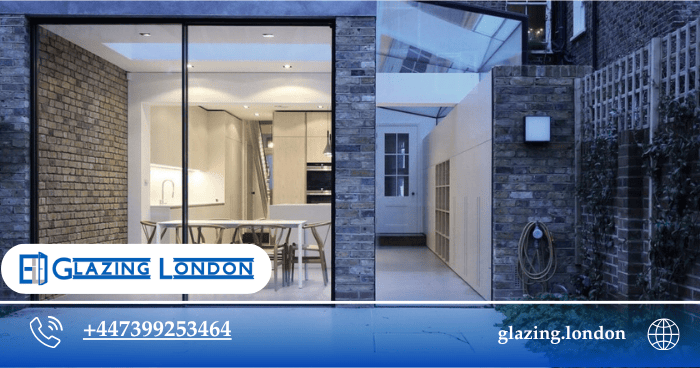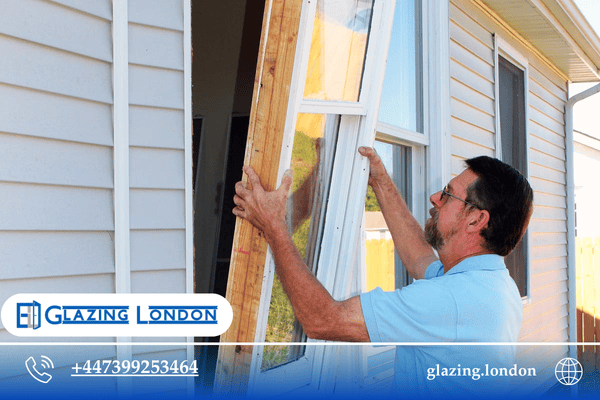The invisible upgrade that turns old windows into an energy-saving system
Introduction: The eco-friendly revolution starts with… your windows
When people decide to make their homes more energy-efficient , they usually think of solar panels , new heating systems , or wall insulation . Almost nobody thinks about the single most wasteful architectural feature in older homes:
Double Glazing London
their windows .
Windows are where most of a home’s heat escapes — sometimes up to 40% .
And if your home is older , particularly pre-1930 , the problem is worse because:
- You likely have single-glazed windows .
- Your frames were built for beauty , not insulation .
- The glass is thin and does nothing to stop heat from escaping .
Replacing them seems like the obvious answer .
Except… it isn’t .
If you live in a conservation area , a heritage property , or you simply love your existing windows , replacing them isn’t possible or desirable . Many homeowners don’t want to lose the original sash frames or the character of the property .
This is exactly where secondary glazing becomes a genius solution .
Instead of ripping anything out , you add a slim , discreet internal frame with a new insulated glass panel . It performs like modern double glazing while preserving your original windows .
Secondary glazing is not just a home improvement .
It’s a sustainability strategy — one that starts paying off from the first winter night .
Chapter 1: Why windows are the biggest source of energy waste
We rarely think about windows as “technology .”
But they are . And the technology in most older homes is ancient .
A single pane of glass has almost no thermal resistance . Heat touches it , transfers through it , and disappears into the cold outside air . You turn up the heating to compensate , your home warms up , the heat escapes again , and the cycle repeats .
The problem feels invisible — until you start paying energy bills .
Secondary glazing interrupts that cycle beautifully .
By adding an additional pane behind your existing window , you trap a layer of air inside the frame . Air = insulation . This air layer becomes a thermal shield that slows down the movement of heat .
In winter , heat stays inside .
In summer , heat stays outside .
The result is a warmer , more efficient home without replacing a single window .
Window installation in London
Chapter 2: Eco-friendly starts with using what you already have
Sustainability isn’t just about reducing energy consumption .
It’s also about avoiding unnecessary manufacturing and waste .
Every time a window is replaced , this happens:
- The old window becomes waste (often impossible to recycle) .
- A new window must be produced (high carbon footprint) .
- Transport , installation , and disposal create emissions .
Secondary glazing does the opposite .
Instead of removing , discarding , and replacing , it enhances your existing windows .
No landfill waste .
No resource waste .
No production waste .
The eco-friendly logic is simple:
The greenest material is the one you don’t throw away .
Secondary glazing proves that sustainability doesn’t need to be radical .
Sometimes , the smartest choice is the smallest intervention .
uPVC Window Installation in London
Chapter 3: Warmth without over-heating — and without over-spending
Secondary glazing improves your home’s energy efficiency in two ways:
- By reducing heat loss in winter .
- By blocking heat transfer in summer .
Think about it like adding a warm , invisible coat over your windows . The insulation layer stabilizes internal temperature so your heating system doesn’t have to fight against constant heat escape .
People often tell us:
“After secondary glazing , the thermostat became something we barely touched .”
When your home holds heat naturally , your heating system rests more .
When your heating system rests more , your energy bills drop .
And that contributes directly to eco-sustainability .
Less heat demand means:
- Less fuel usage
- Fewer emissions
- Less strain on energy infrastructure
Casement Window Installation London
Chapter 4: How secondary glazing transforms noise into silence
Most people discover secondary glazing for energy savings .
But they end up falling in love with it because of something completely different:
silence .
Noise has become the new pollution .
Traffic , trains , busy streets , barking dogs , late-night conversations… they all slip through thin windows .
Secondary glazing adds mass , distance , and acoustic separation between you and the outside world . It can reduce noise by up to 80% — something double glazing alone cannot achieve .
Why does silence matter for eco-friendliness?
Because mental energy is part of sustainability too .
A quiet space improves:
- Sleep quality
- Stress levels
- Cognitive focus
- Emotional well-being
Eco-friendly isn’t only about the planet .
It’s about living sustainably inside yourself .
Flush Sash Window Installation in London
Chapter 5: Better insulation = reduced carbon emissions
When homeowners talk about sustainability , they often talk about what they consume .
Secondary glazing changes the conversation .
Instead of “consume smarter ,” it becomes:
“consume less .”
Less heating means fewer fossil fuels being burned .
Fewer fossil fuels mean fewer emissions .
Over the lifespan of a home , that impact becomes enormous .
Secondary glazing turns your property into a mini-carbon-reduction system .
No high technology .
No lifestyle change .
Just better insulation .
Bay & Bow Window Installation in London

Tilt & Turn windows installation
Chapter 6: Why secondary glazing beats window replacement (for eco reasons)
Replacing windows may sound tempting . It’s modern . It’s trendy . It’s “new .”
But replacement carries a heavy environmental cost .
Window replacement requires:
- Manufacturing new glass
- Milling new frames
- Transport and logistics emissions
- Removing old frames
- Landfill disposal
Secondary glazing requires none of that .
You keep every part of your original window intact .
You simply make it smarter .
It looks exactly the same .
But it performs completely differently .
This is why conservation officers , heritage associations , and eco-architects often recommend secondary glazing first .
Sliding Sash Window Installation in London
Chapter 7: Comfort is the strongest motivator for sustainability
Here’s a secret that energy companies don’t want to discuss:
People don’t insulate their homes to save the planet .
They insulate to feel comfortable .
The savings are a bonus .
Secondary glazing creates comfort by:
- Keeping rooms warmer without heaters blasting
- Eliminating cold draughts
- Removing condensation and damp patches around windows
- Softening the interior environment
- Letting people sit by their windows even in winter
When your home becomes comfortable , everything changes .
People use less heating without even trying — because they don’t need it .
That’s sustainability driven by comfort , not obligation .
Aluminum Window Installation London

Double Glazing Window Installation in London
Chapter 8: Real transformation stories (emotional marketing content)
Every home has a story .
There was a client in a Victorian flat near a busy street . She used to stack towels along the bottom of her sash windows to stop drafts . After secondary glazing , not only did the room stay warm , but the silence shocked her .
She told us , “It feels like the noise stayed outside but the city stayed in view .”
That is the magic of secondary glazing .
No disruption .
No mess .
No compromise between character and comfort .
Just transformation .
Another customer said:
“I didn’t expect to feel this much difference . It’s like the building is finally working with me .”
People don’t buy glazing .
They buy relief .
Relief from cold .
Relief from noise .
Relief from drafts .
Secondary glazing isn’t a product .
It’s peace of mind that pays for itself .
Chapter 9: The emotional side of eco-living
Eco-friendly upgrades often feel like sacrifice .
Turn the heating off .
Wear more layers .
Keep the thermostat low .
Secondary glazing flips that narrative .
Instead of giving something up , you gain:
Warmth .
Quiet .
Comfort .
Efficiency .
Eco-living becomes desirable instead of difficult .
You don’t fight against cold .
Your home stops creating it .
You don’t chase silence .
Your home produces it .
You don’t force sustainability .
Your home embodies it .
Secondary glazing is invisible to the eye but transformative to the senses .

Glass Replacement in London
Chapter 10: Why now is the best time to upgrade
Energy prices are rising .
Environmental consciousness is rising .
Sustainability expectations (from buyers and renters) are rising .
Secondary glazing increases:
- Resale value
- EPC rating performance
- Desirability of your property
Buyers see high energy efficiency and instantly assume a well-maintained , future-proof , low-cost home .
Secondary glazing becomes an investment with measurable return .

Conclusion
Secondary glazing is the most eco-friendly window solution because it works with what you already have instead of replacing it . It reduces energy consumption , lowers bills , blocks noise , and preserves the character of your property — all without waste , mess , or structural changes .
It’s not just smart .
It’s responsible .
It’s sustainable .
And it pays for itself .
Your home becomes warmer without turning up the heat .
Quieter without moving away from the city .
More efficient without replacing your windows .
Eco-friendly starts with what you choose not to waste .
Ready to make your home warmer , quieter , and more eco-efficient?
Book a free secondary glazing consultation .
Same-week installations available .
📞 Phone: +447399253464
Keep your windows . Upgrade your comfort . Reduce your bills .





